A few weeks back, we showed off the production photos for Idle Muse Theatre Company’s excellent, Jeff-Recommended The Tempest. Since the date of that post, The Tempest has received excellent reviews, the aforementioned Jeff Recommendation, and it has become the best selling show in the Idle Muse Theatre Company’s history. As the production closes with a final weekend of sold out shows, I thought I’d post some of the archival photos from The Tempest.
I’m going to do this in parts because I photographed different facets of the production, and I’d like to give proper focus to each of these facets. I’ll start with archival photography in general, followed with the set and characters. In a second post, I’ll show off the lighting and costume photography.
What Are Archival Photos?
Moreover, what’s the difference between preproduction, production, and archival photos?
Preproduction Photography
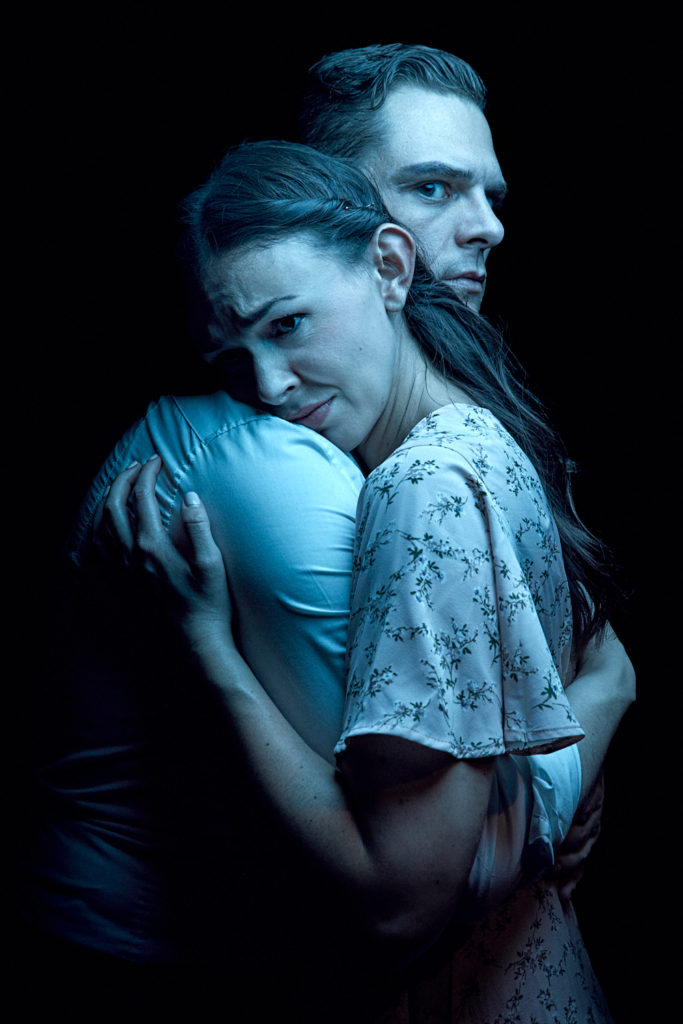
When Distant Era does preproduction photos, these are images made to promote the show, usually before rehearsals have started. Nearly all our work with Babes With Blades Theatre Company is comprised of preproduction photos. Here’s another example of preproduction photos from Lifeboat Productions’s The Black Knight (which also features Gary Henderson from The Tempest). Usually, preproduction photos end up on marketing brochures and online advertisements. The costumes usually aren’t the ones seen in the show, but suggestive of the show.
Production Photography
Production photos are the most common kind of theatrical photos. They’re usually taken during technical rehearsals and serve as the show’s official press images. Most companies I work with have very little time during tech week, and photos must be taken quickly, reviewed, selected, and processed by noon the following day so they can be distributed to the press. This usually happens one or two nights before opening, though for more complex productions, the technical elements are still in process after photography. I can’t count the number of productions that have introduced killer technical effects or costume pieces after the production photos were taken. Idle Muse in particular has a brilliant lighting designer named Laura Wiley who creates beautiful stage effects with lights, projections, fog, and other sorcery. The same goes for costumes. In an effort to document their work for posterity, for their portfolios, and for the sheer artistry of what the company created in full, we have archival photography.
Here’s the first archival image I ever took for Idle Muse Theatre Company, for their 2017 production of The Veil. This chilling seance scene included actual smoke and mirrors, as fog descended upon the scene, and weird images appeared in the mirror onstage.
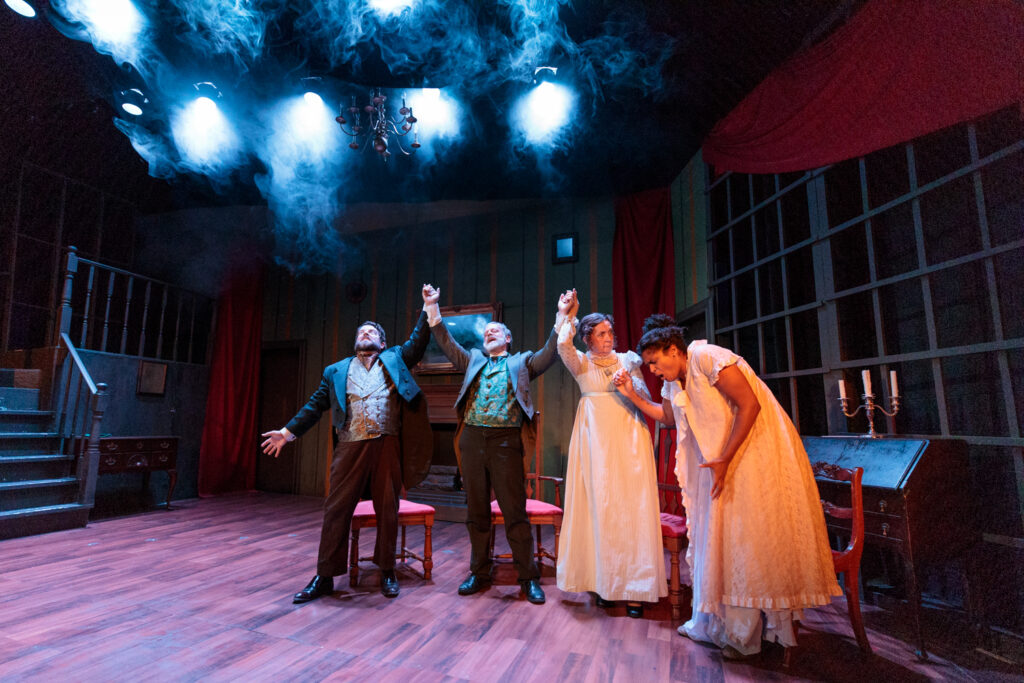
Archival Photography
Whereas a preproduction photography session focuses on the show conceptually and concentrates on images to drum up audience interest and awareness months in advance, and production photography swiftly captures key images that sell the show as it manifests in its final technical process, an archival photography session documents the production for the artists who created it.
Archival photography emphasizes the technical and design elements of a production first. Anything that wasn’t completed in tech week gets shown off here. Also, beautiful lighting elements that might not have made the show’s list of shots are captured in archival photography. Here we capture costume elements and details as well. That’s how Distant Era’s archival sessions started. Yet while the main focus of the archival session is to capture the technical elements, we try to document every aspect of the production that we can, and that includes the actors, ensuring that every performer has a record of their work.
Setting the Stage
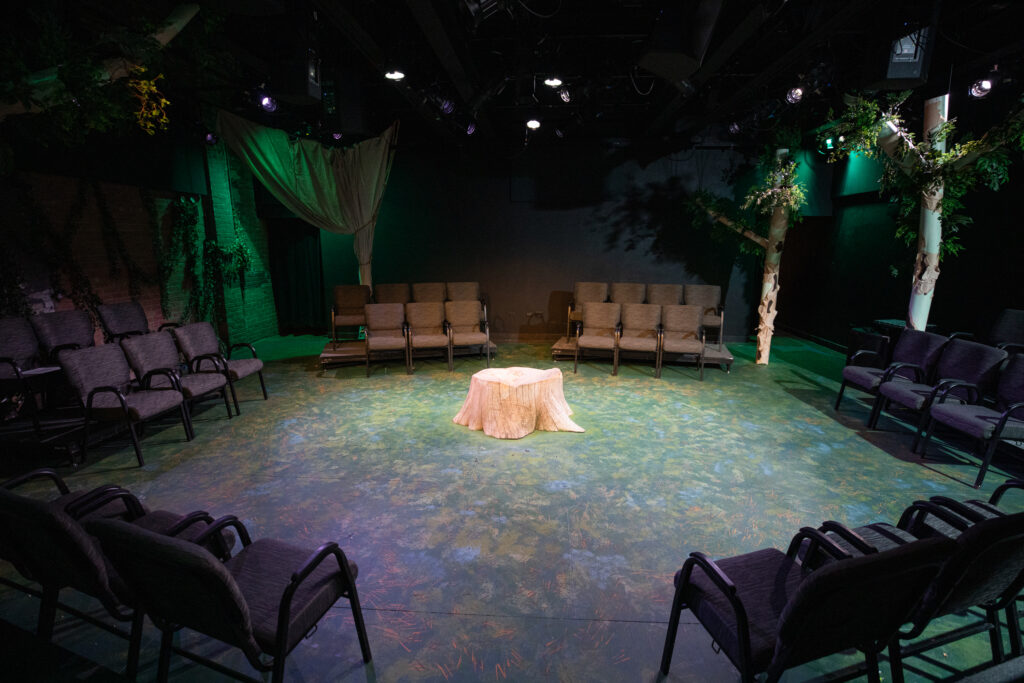
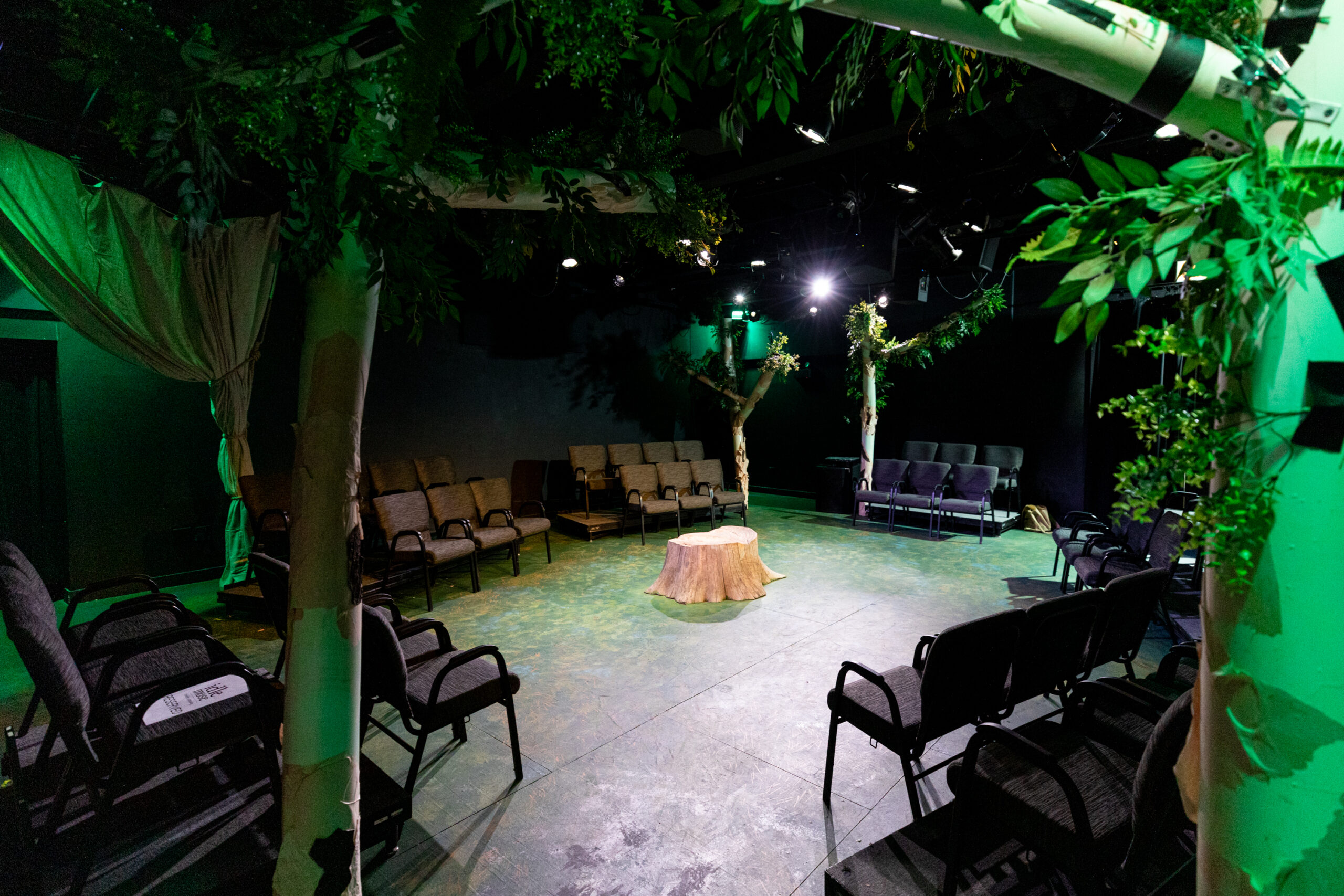
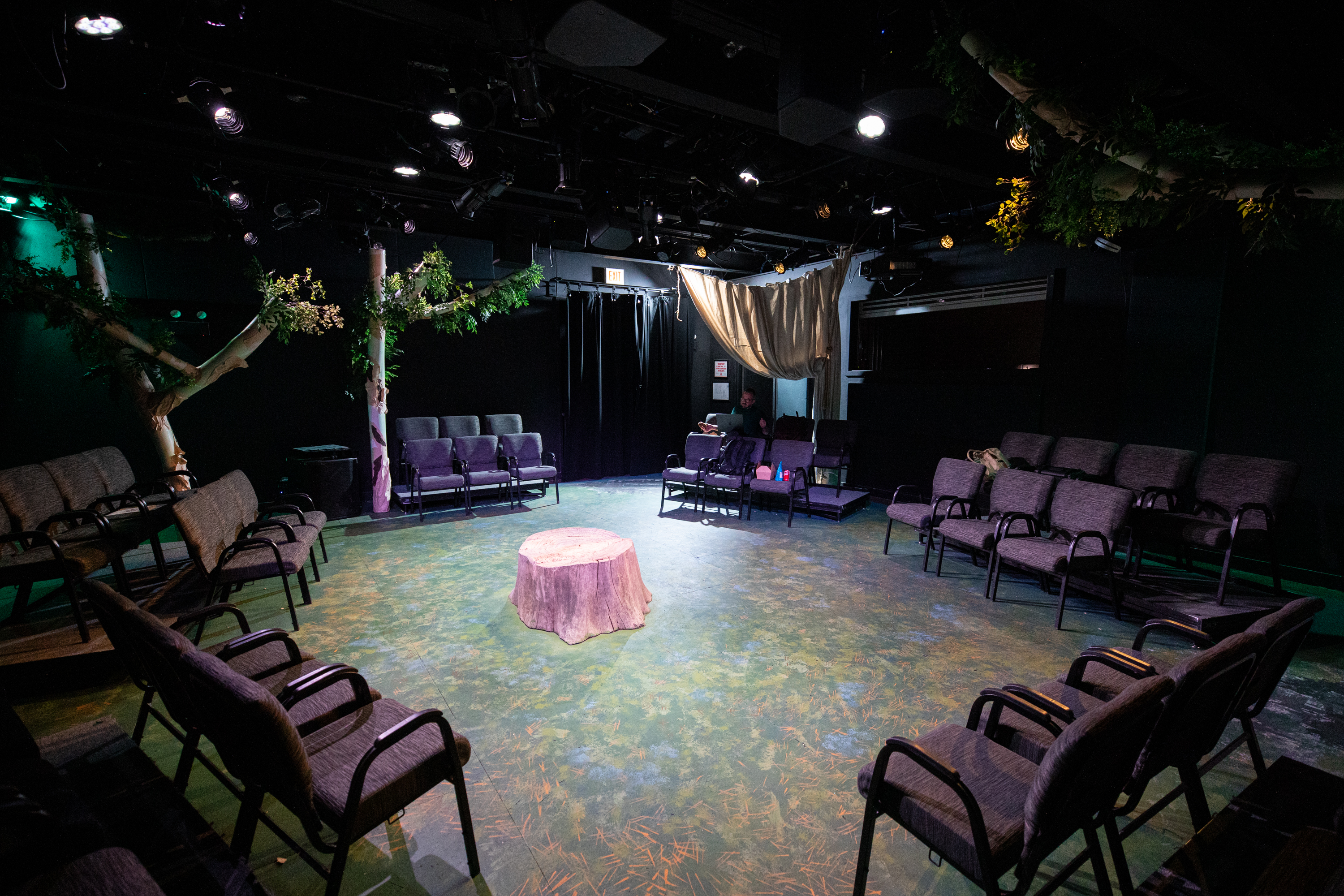
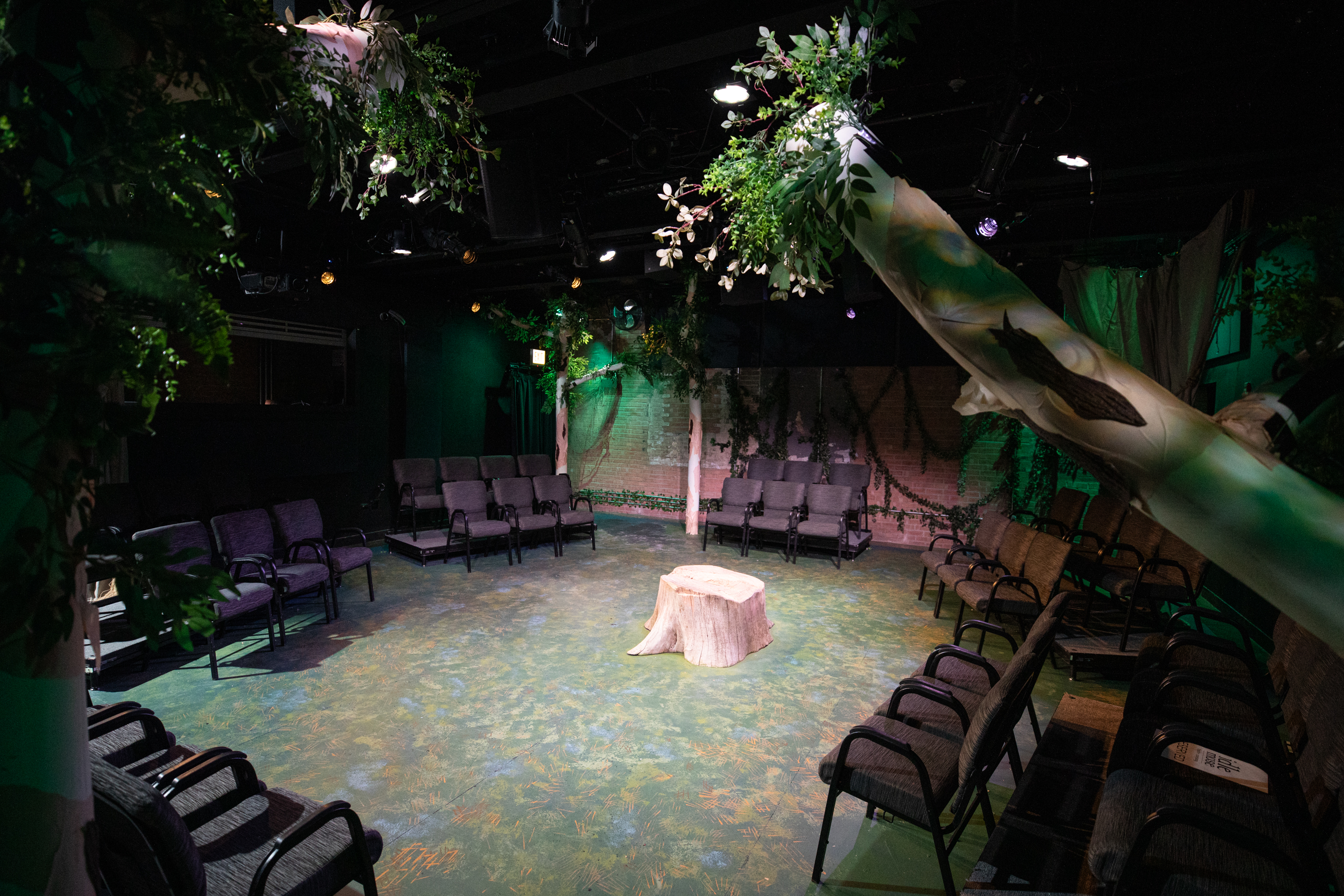
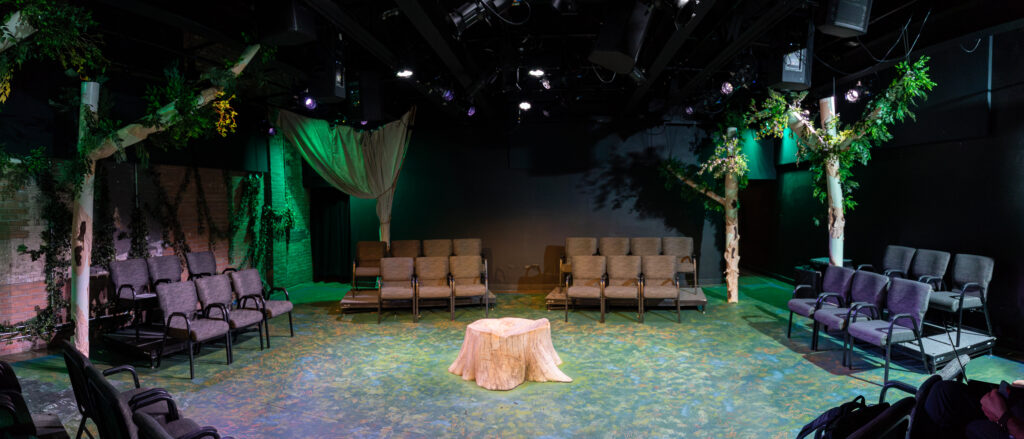
We began our production photography by shooting scenic painter Breezy Snyder’s work from all angles. Photographing the bare stage in this way affords us a glance at the detailed scenic canvas upon which the play would be performed.
The Characters
Before we photographed the action of The Tempest and captured Laura Wiley’s immersive lighting design, we did a quick round of character portraits. Idle Muse’s production of The Tempest likely boasts a larger than average number of cast members thanks to its inspired casting of six actors to play the role of the airy spirit Ariel. (Each of these Ariels has its own distinct personality, appearance, props, and costume pieces, and yet they simultaneously act as one being onstage. It’s hard to describe, but the effect is perfectly achieved.)
These character portraits capture the general mood of each character. We took variations on each. Later, we’d specifically photograph the costumes, head to toe, as well as close-up shots of individual pieces.
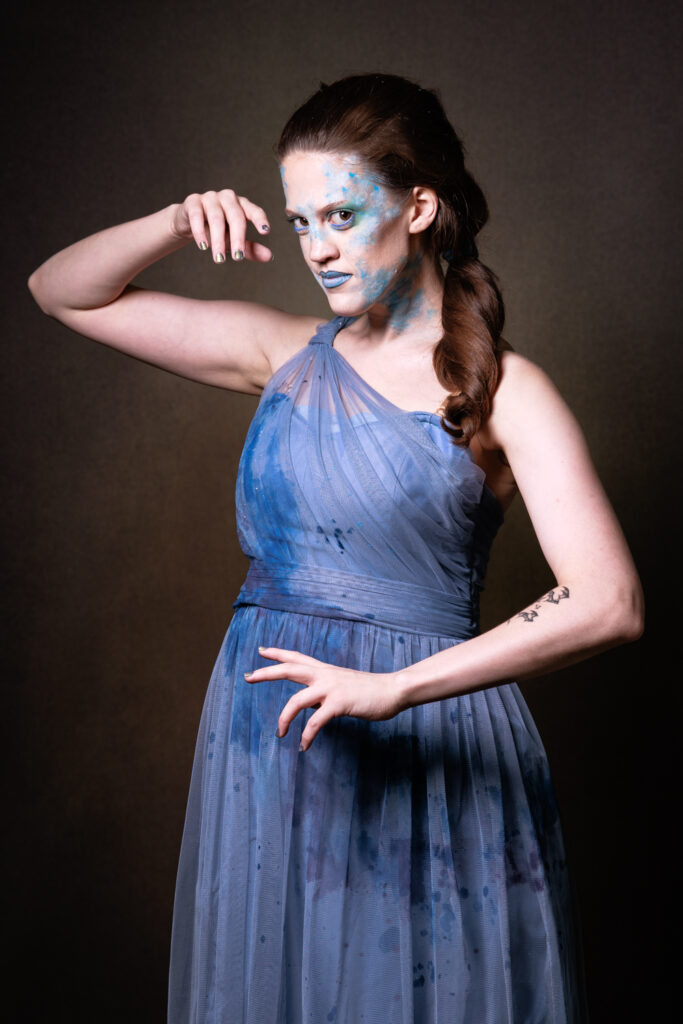
Jacque Bischoff
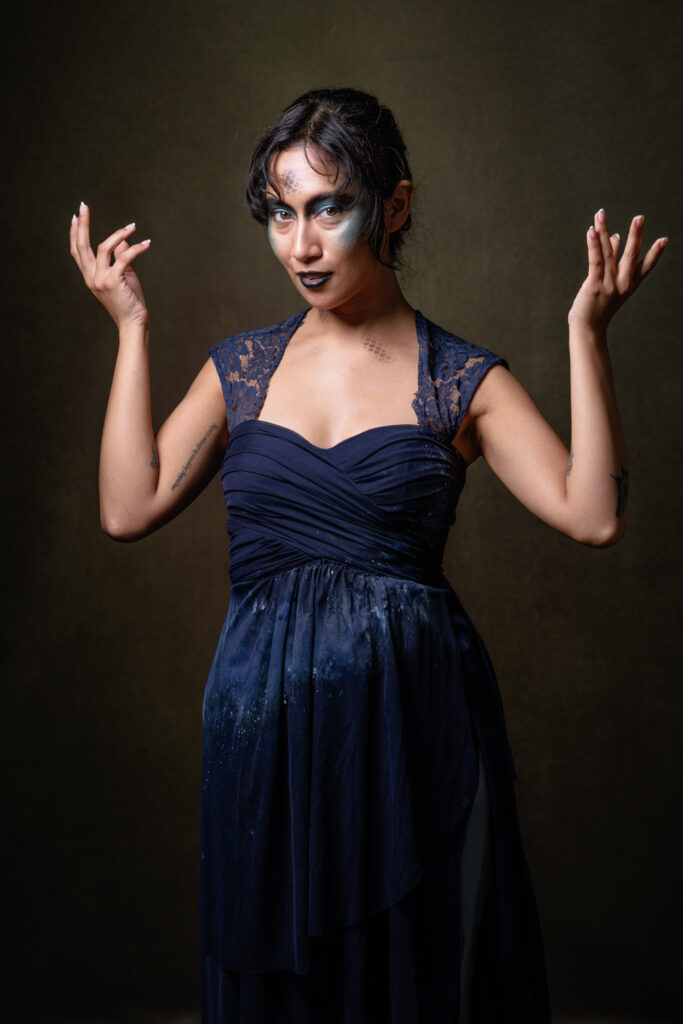
Emely Cuestas
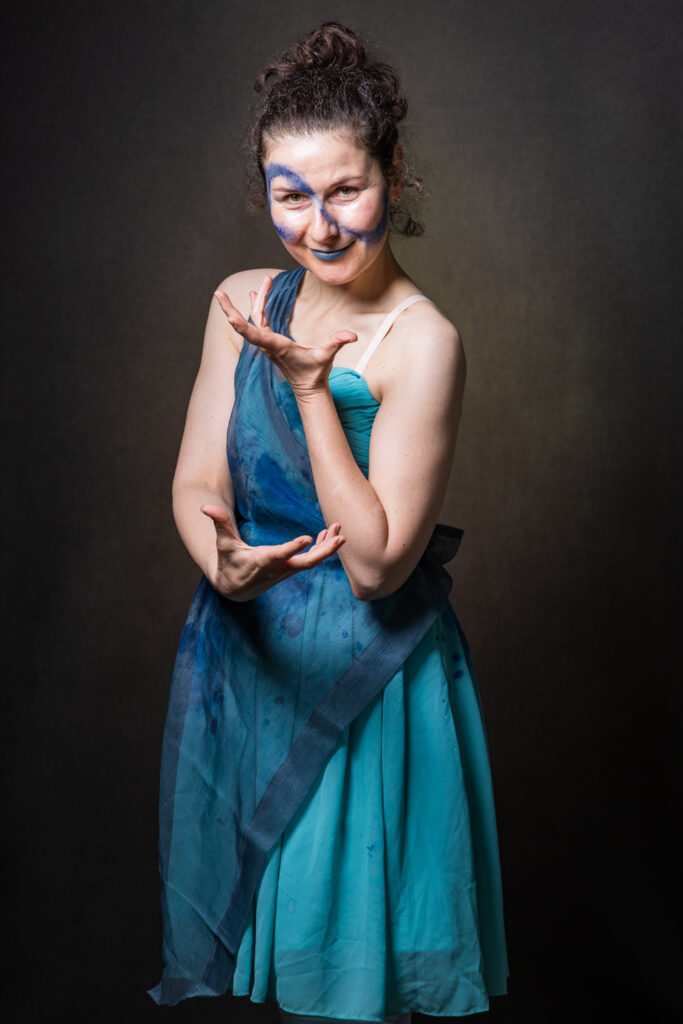
Mara Kovacevic
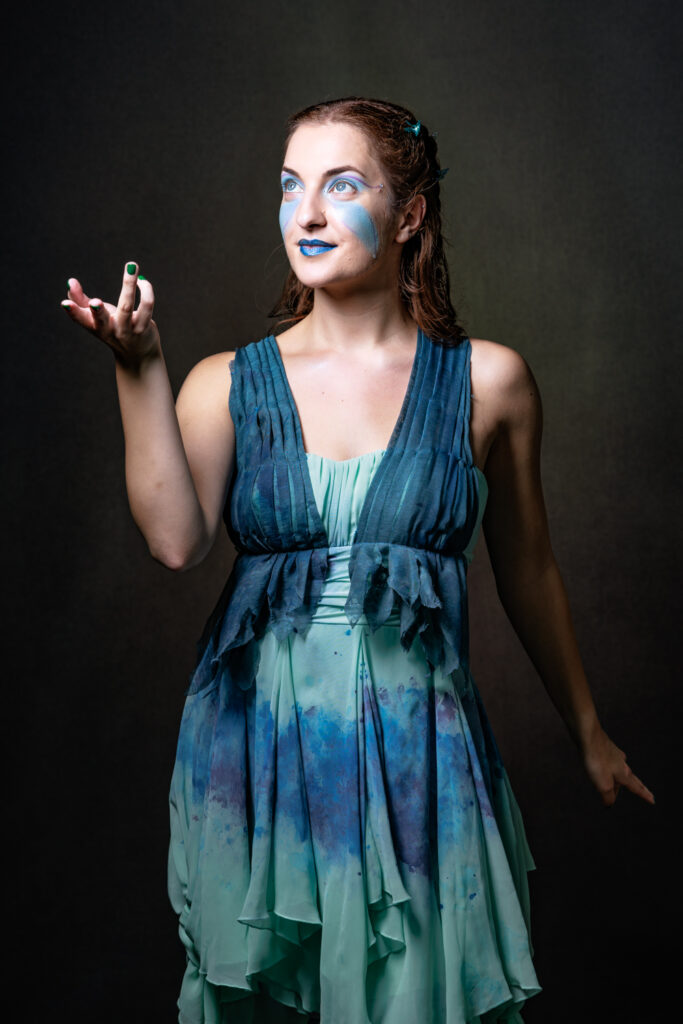
Emily Pfriem
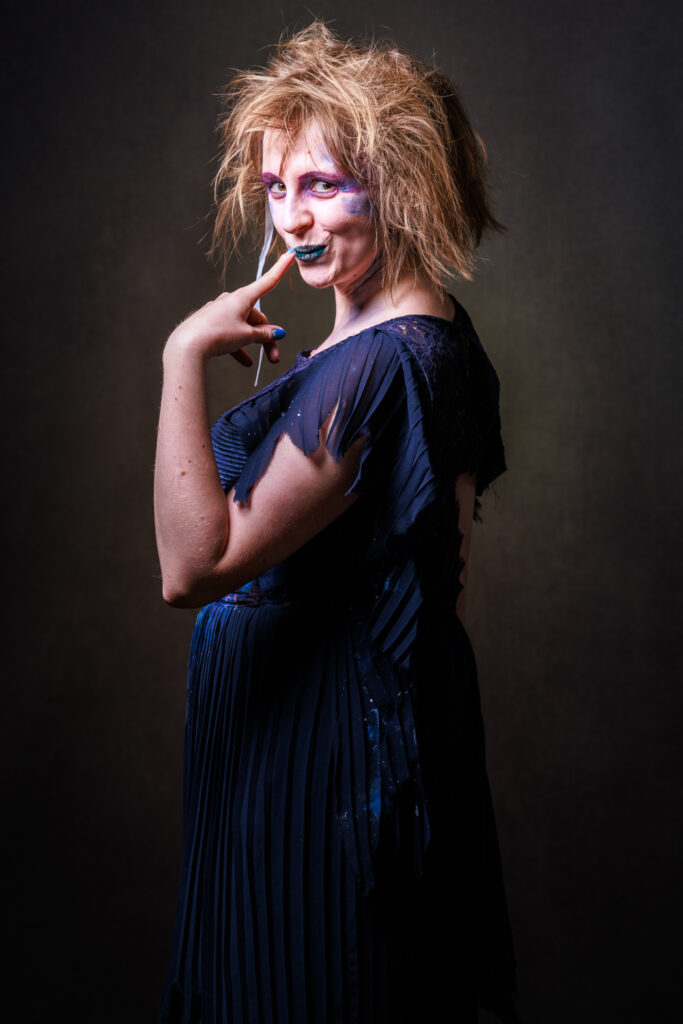
Connar Brown
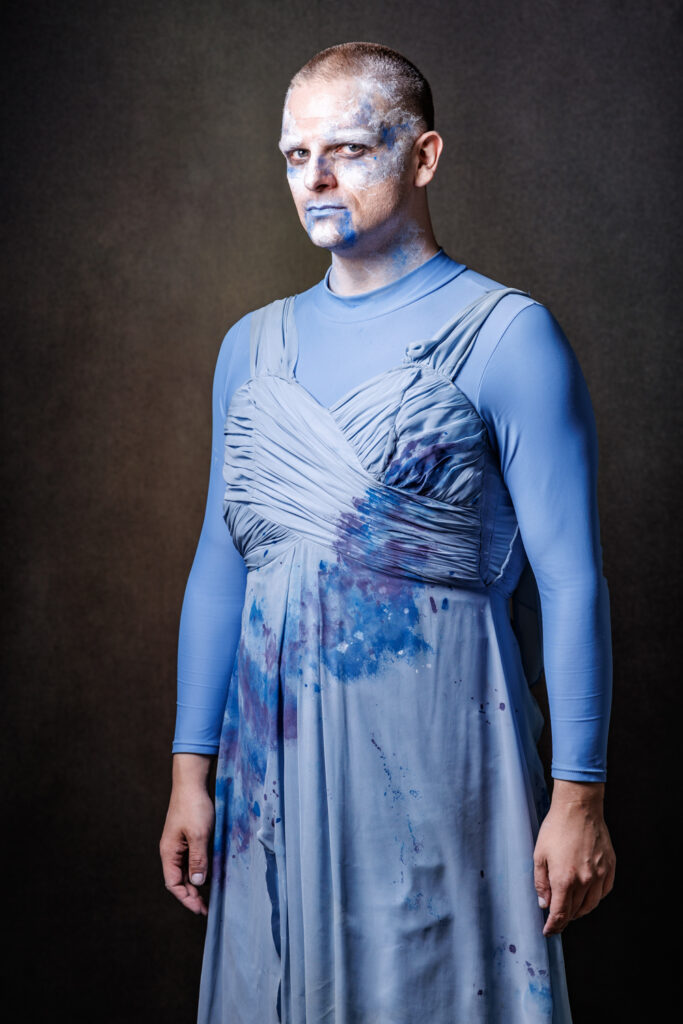
Gary Henderson
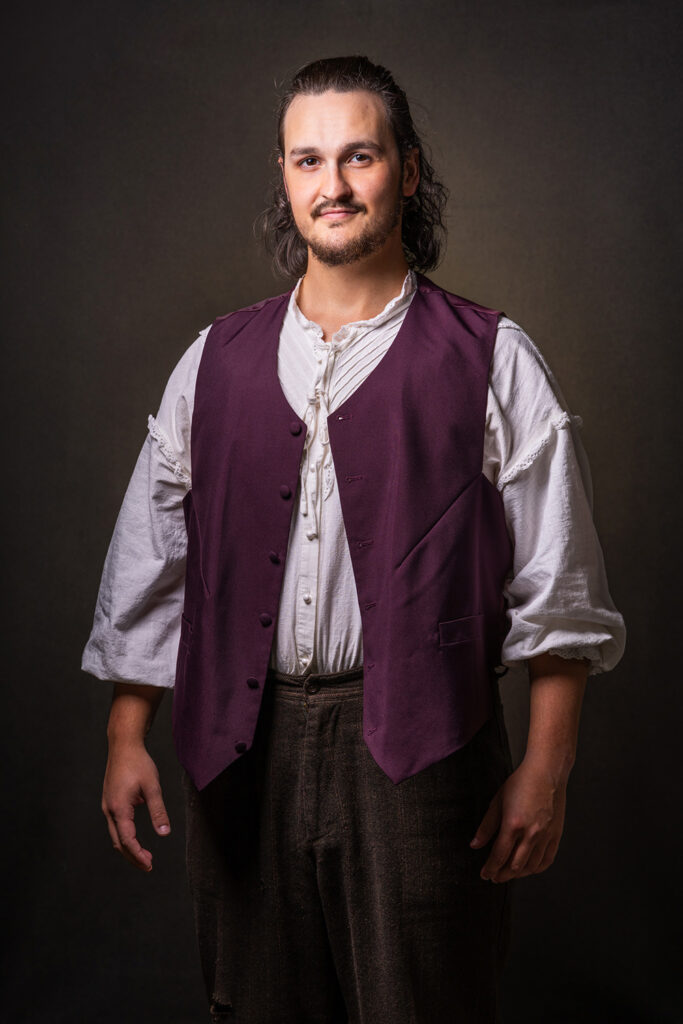
Boomer Lusink
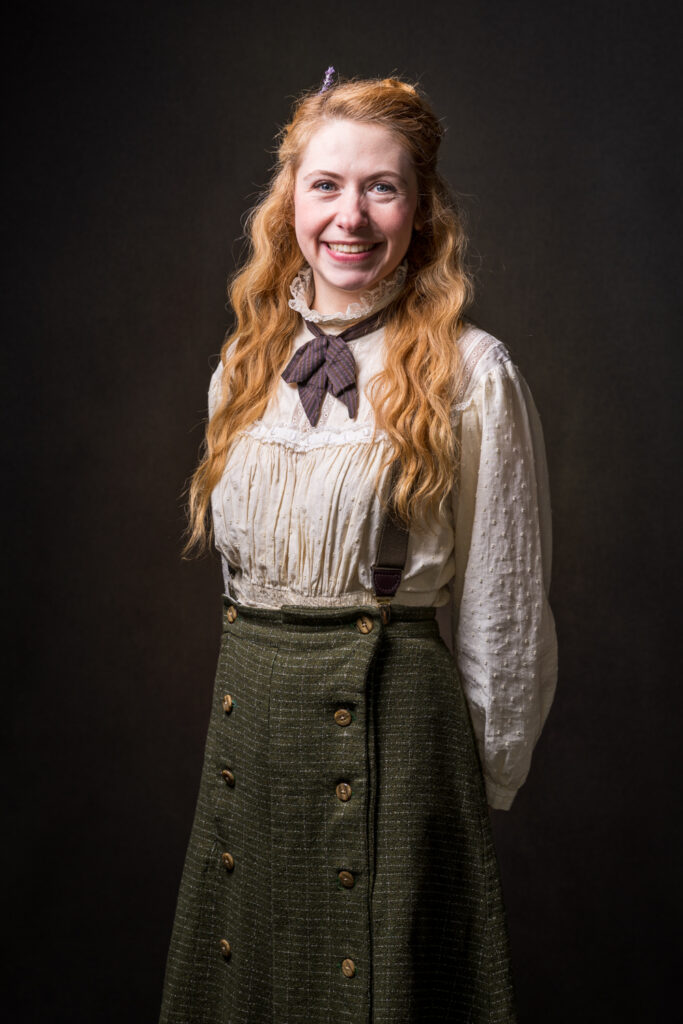
Caty Gordon
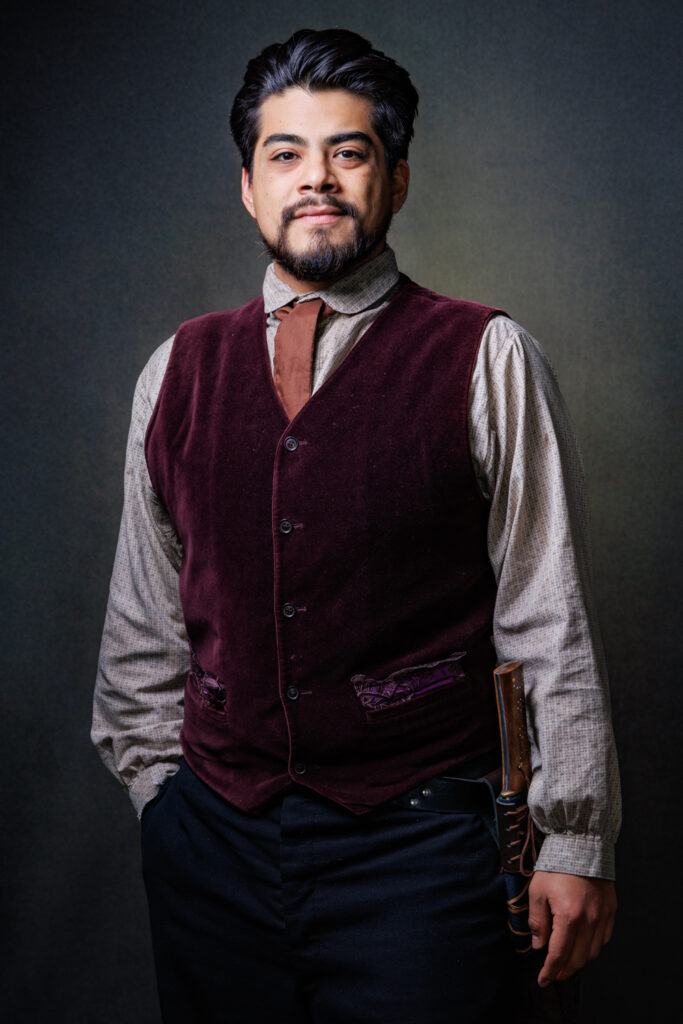
Xavier Lagunas
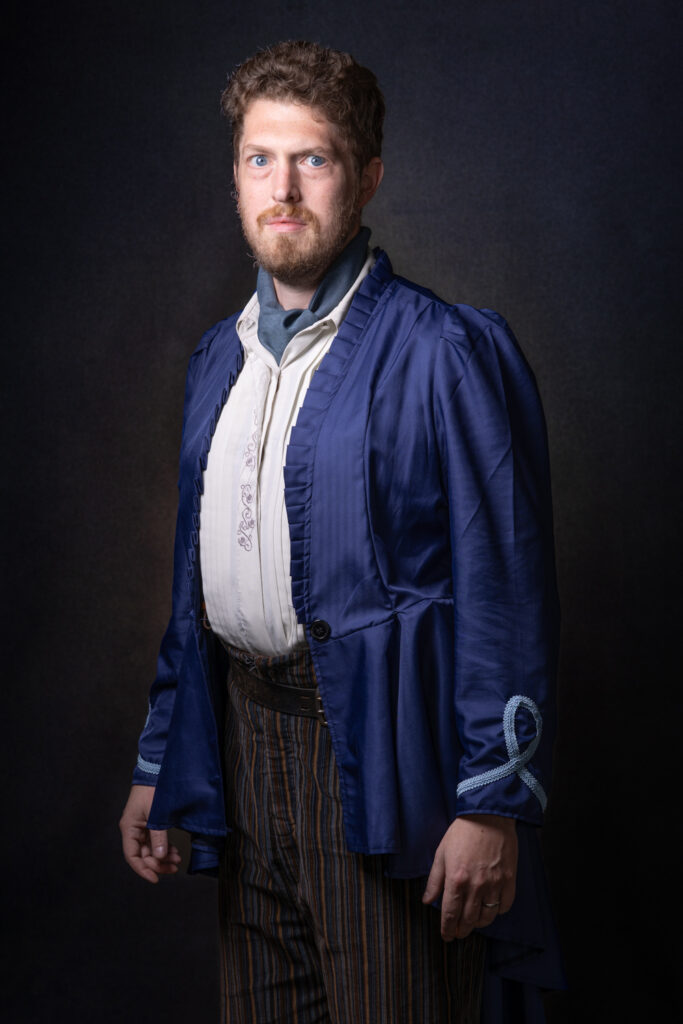
Jack Sharkey
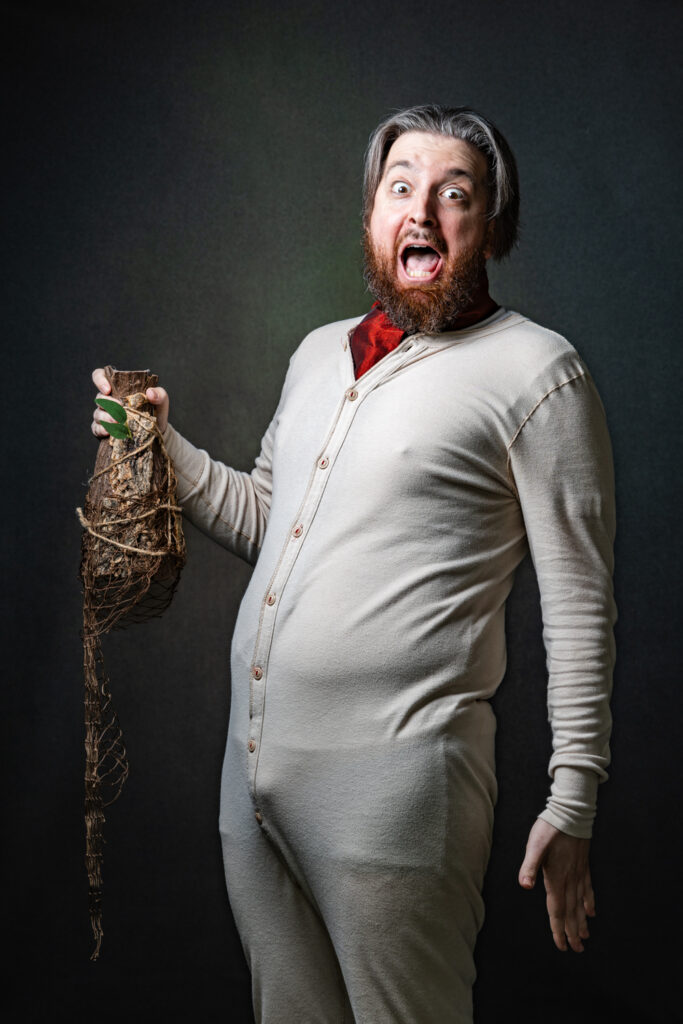
Michael Dalberg
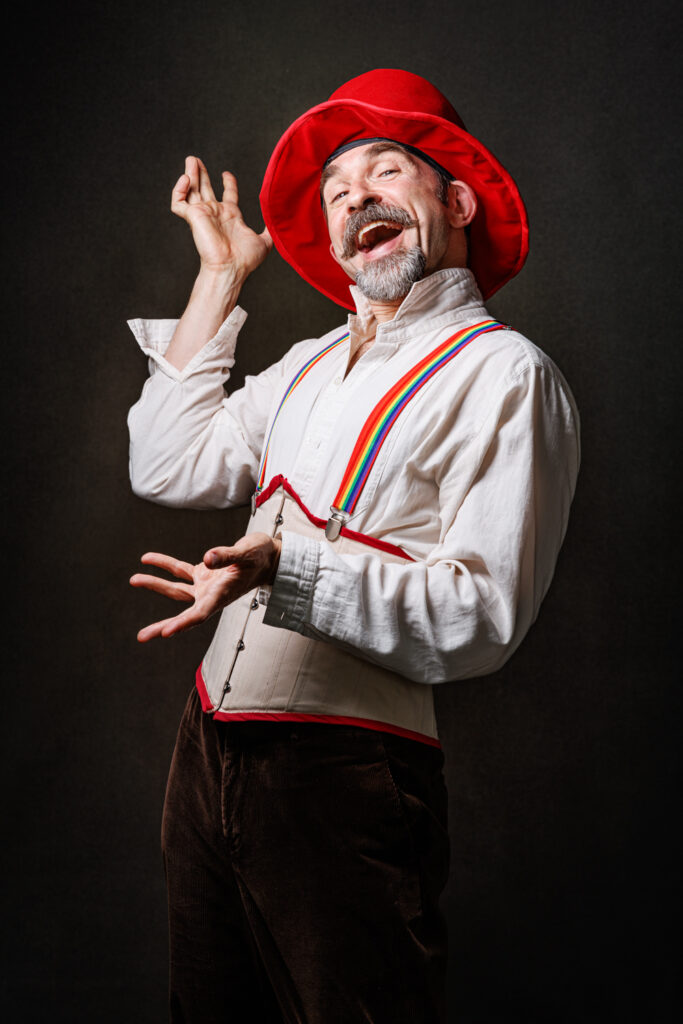
Joel Thompson
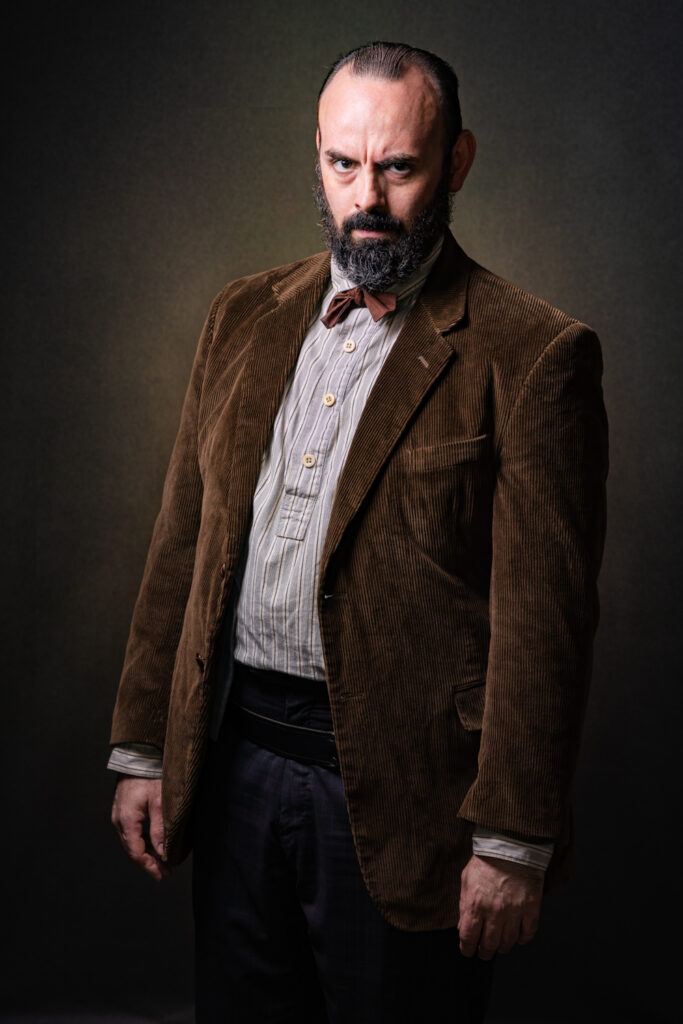
Eric Duhon
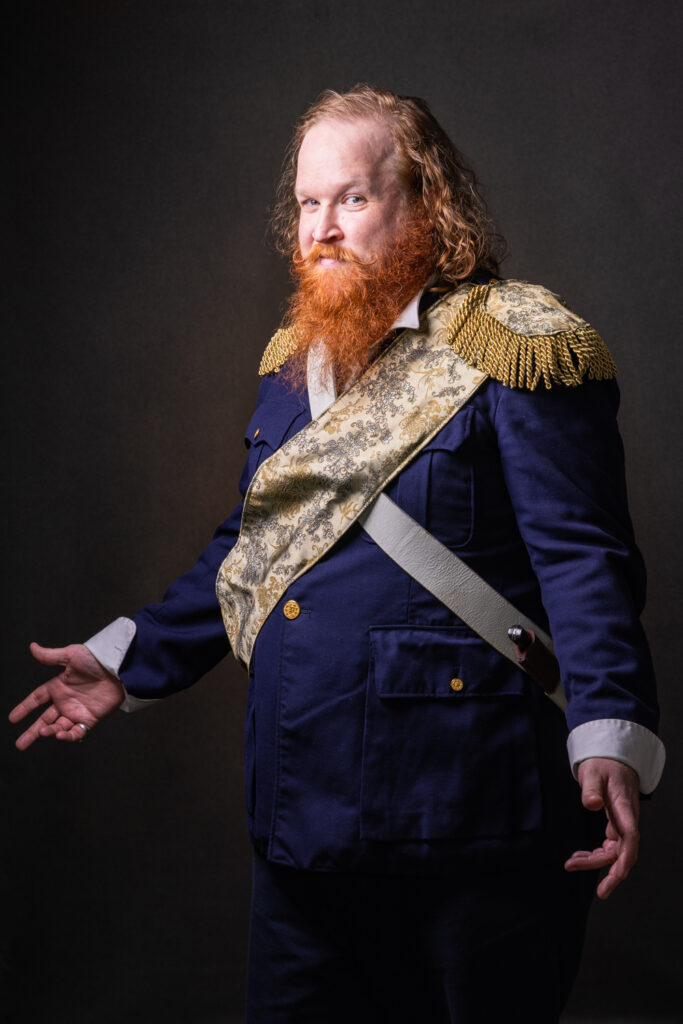
Orion Lay-Sleeper
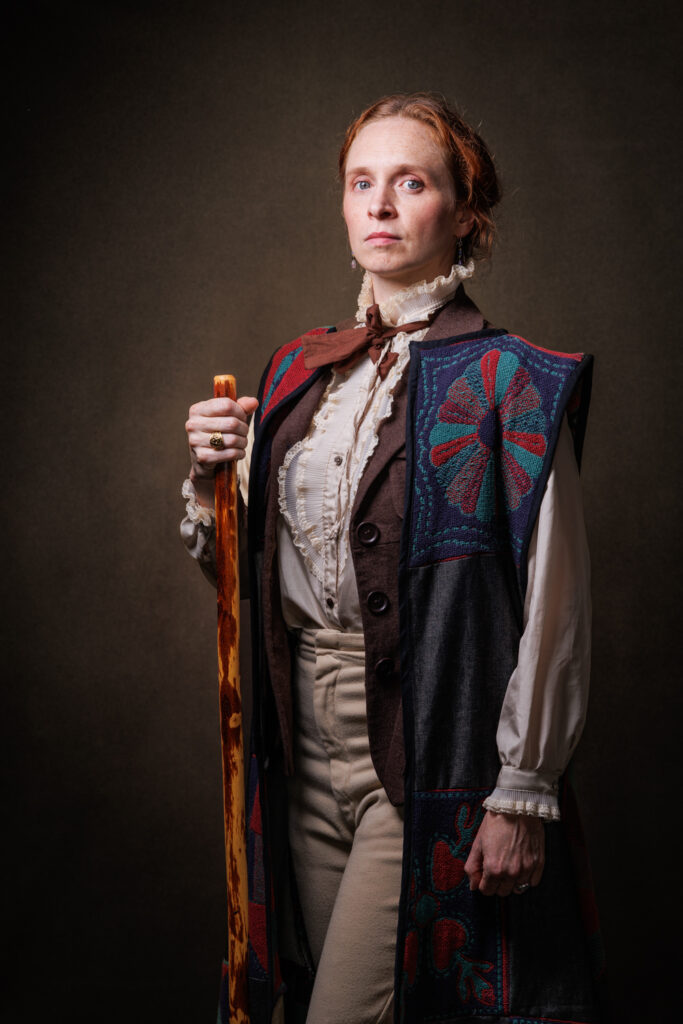
Elizabeth MacDougald
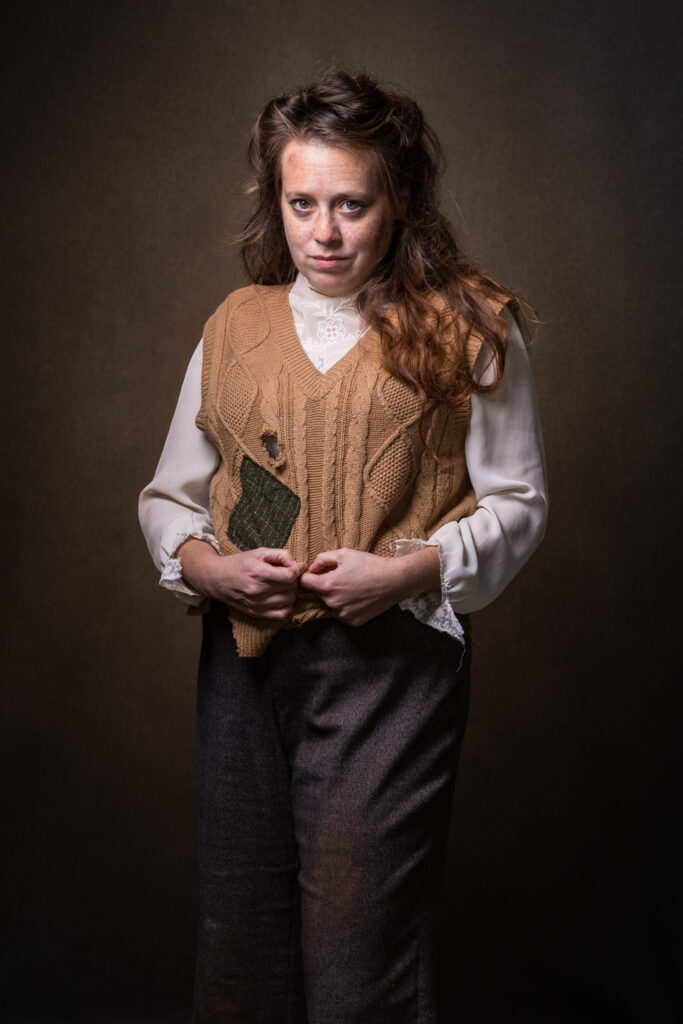
Jennifer Mohr
Such Stuff as Dreams Are Made on
Previously, I commented on how special this show was. Since then, I saw it again and confirmed those initial feelings. I’ve seen strong productions of The Tempest before, including one by American Players Theater, as well as Chicago Shakespeare Theater’s magical Teller-directed one in 2015. And Julie Taymor’s film, which I seem to like more than most people. So I didn’t know I’d find something new to love in The Tempest. But I did. I’ll get into that more later. I hope Idle Muse recognizes how special it was; if nothing else, they’ll have hundreds of photographs to remember it by.
Thanks to Kati Lechner for organizing these archival shots and to Becky Warner for running the light cues during our sessions. Massive congratulations to Idle Muse Theatre Company on a successful run of The Tempest.
Here’s a teaser for part two of this archival series when we look at Laura Wiley’s brilliant lighting…
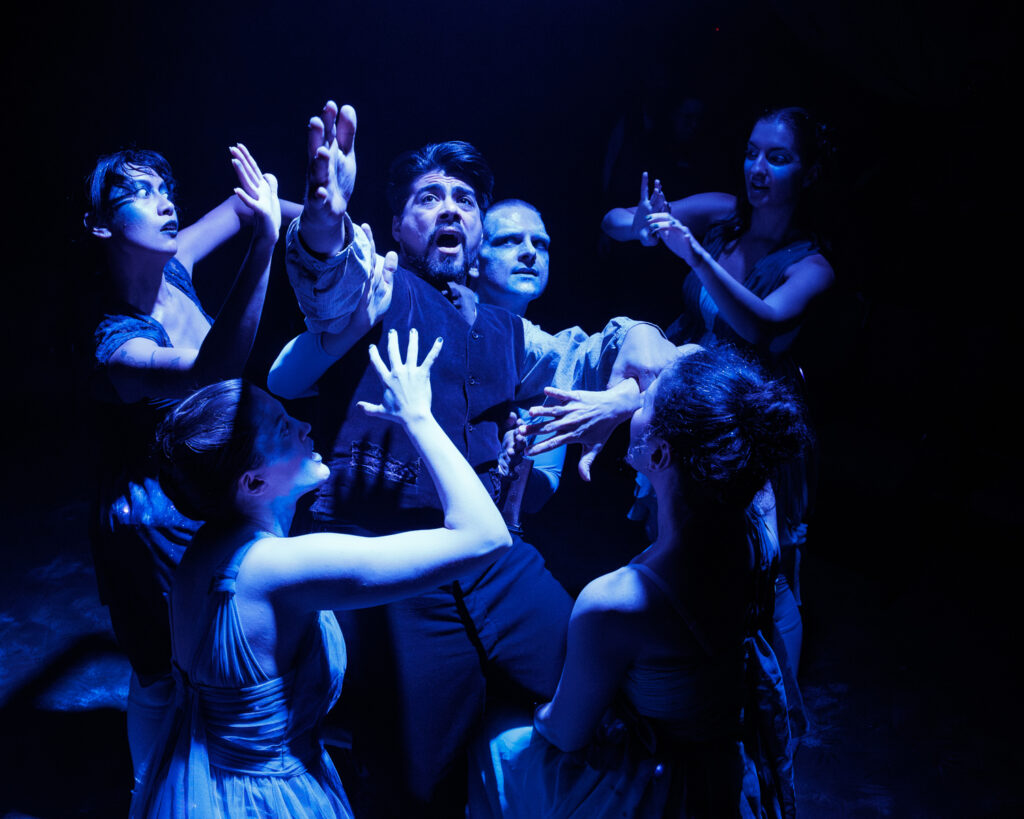
Once again, here’s the cast and crew of show as listed on Idle Muse’s website:
CAST: Elizabeth MacDougald (Prospero), Caty Gordon (Miranda), Jennifer Mohr (Caliban), Boomer Lusink (Ferdinand), Mara Kovacevic (Ariel 1), Gary Henderson (Ariel 2), Connar Brown (Ariel 3), Emely Cuestas (Ariel 4), Jacque Bischoff (Ariel 5), Emily Pfriem (Ariel 6), Michael Dalberg (Stephano), Joel Thompson (Trinculo), Jack Sharkey (Alonso), Eric Duhon (Sebastian), Orion Lay-Sleeper (Antonio), Xavier Lagunas (Gonzalo), with understudies Riley Doerner, Ethan Carlson, Makenna Van Raalte, Brian Healy and Andre Colin
CREATIVE: Tristan Brandon (director), Shellie DiSalvo (production manager), Maureen Yasko (intimacy designer), Laura Wiley (lighting & projection designer), L.J. Luthringer (sound designer), Jennifer Mohr (costume designer), Becky Warner (stage manager), Lindsey Chidester (associate stage manager), Libby Beyreis (assistant director and violence design), Kati Lechner (music director), Evan Jackson (artistic director), and Breezy Snyder (scenic painter).
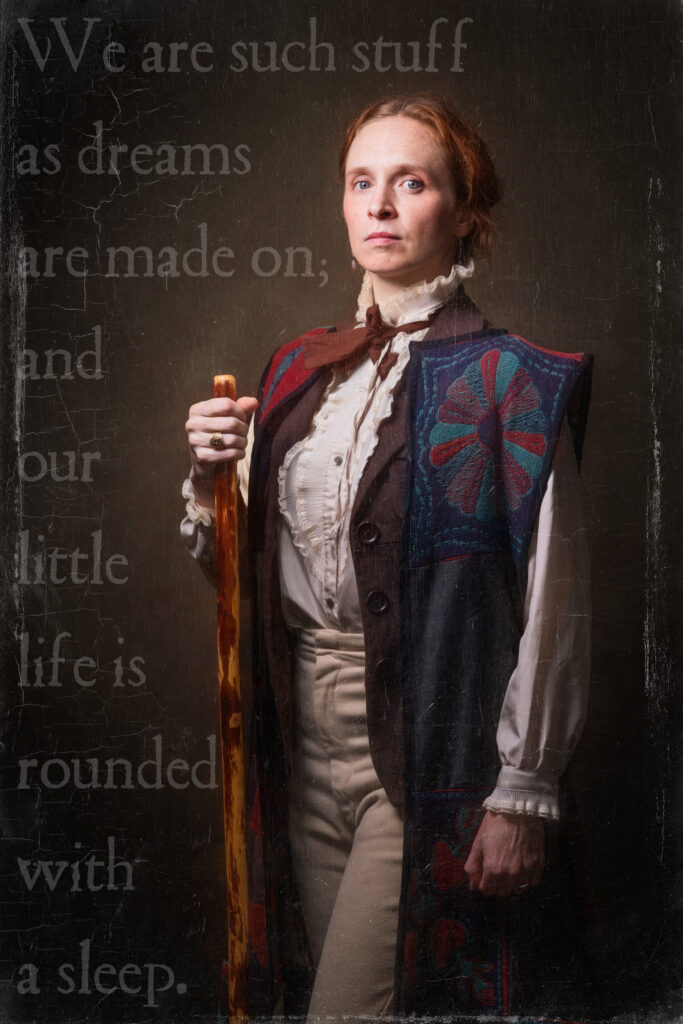

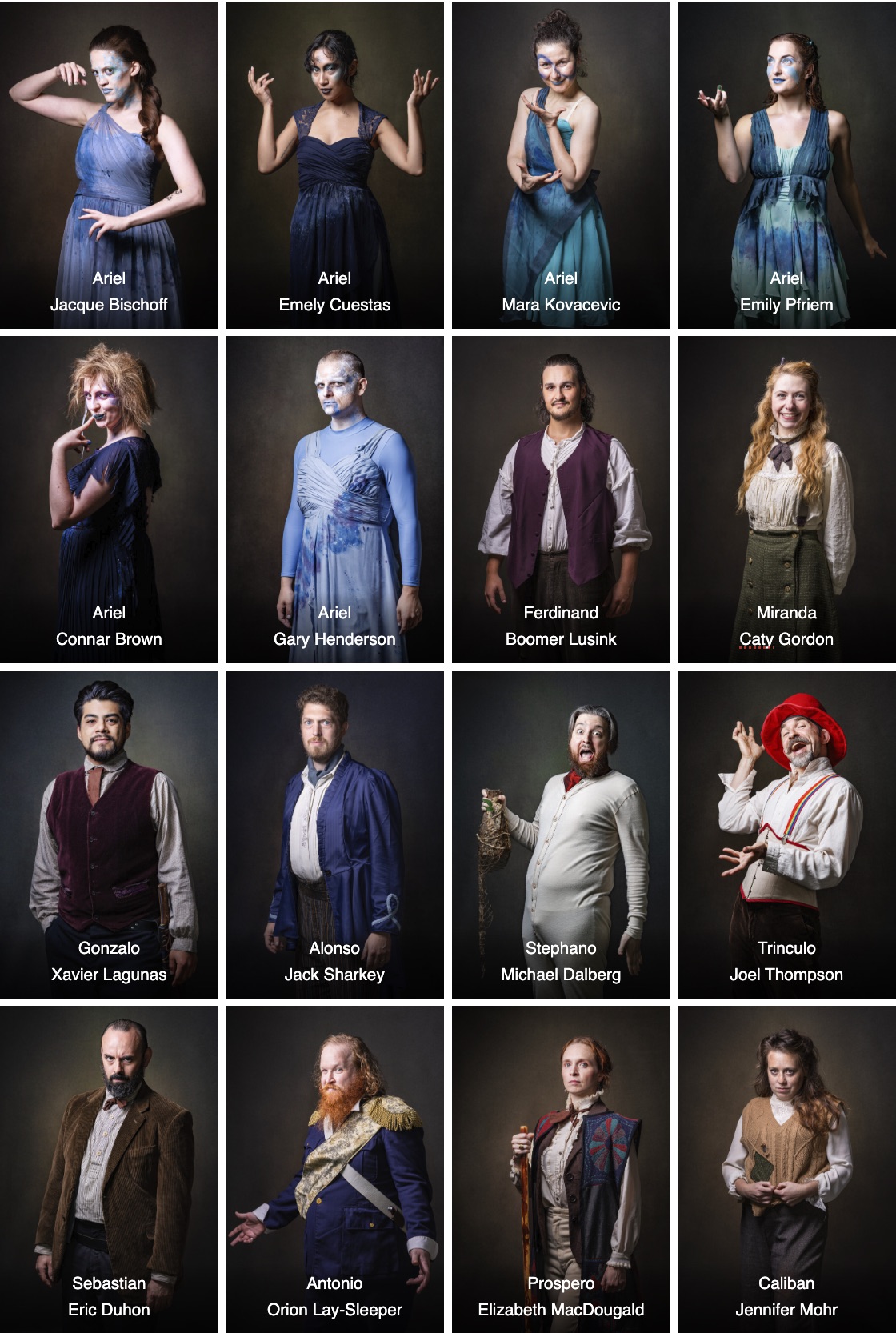
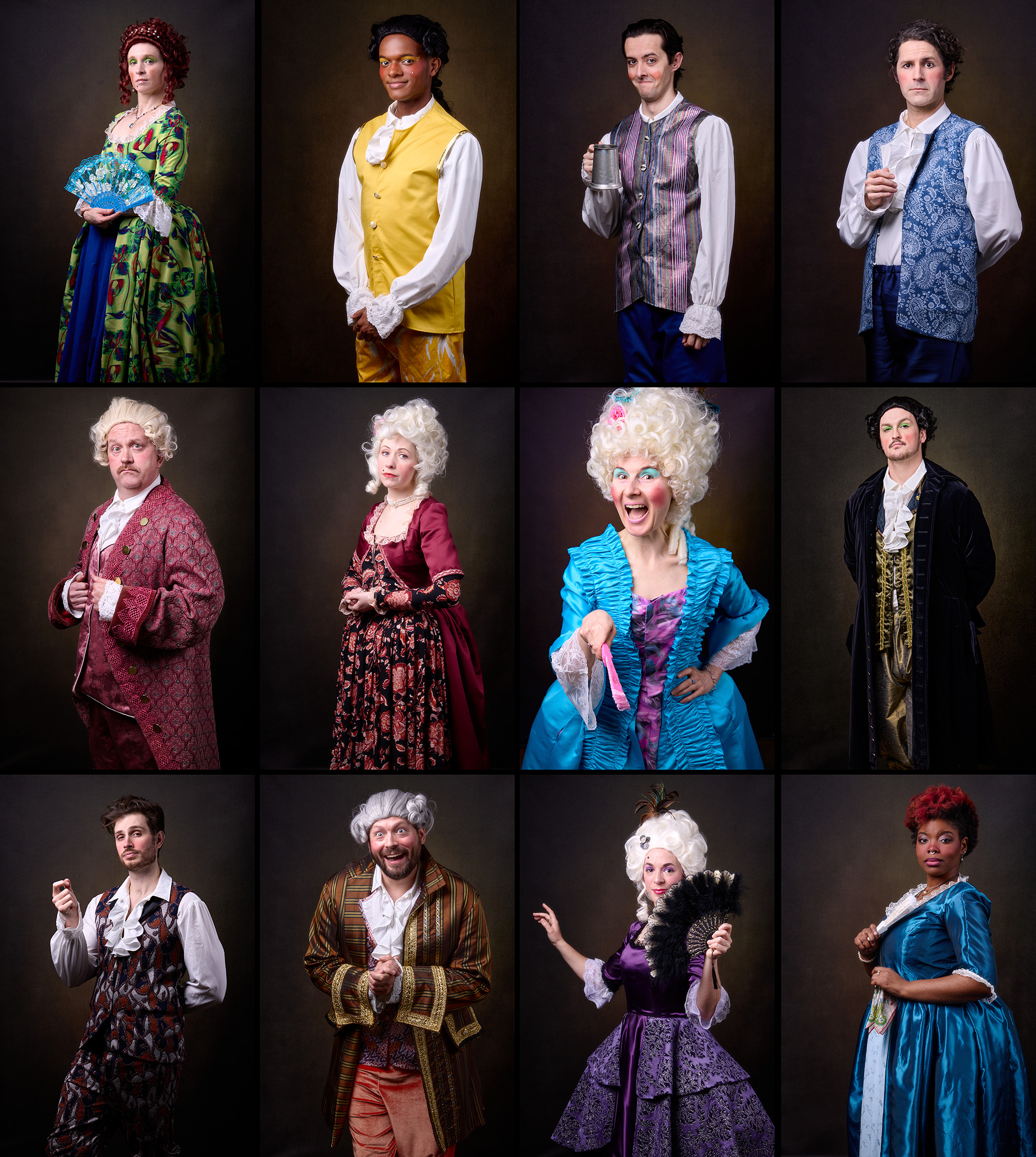
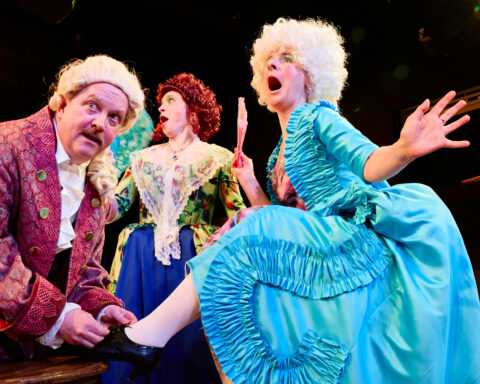
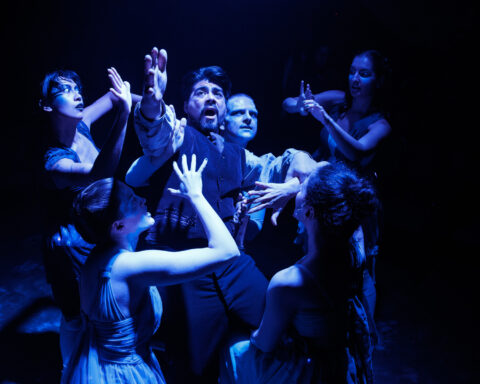
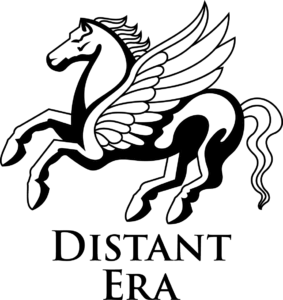
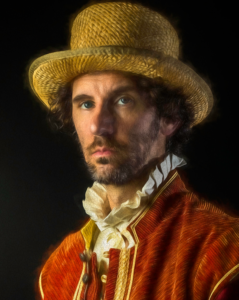
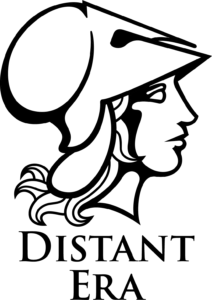
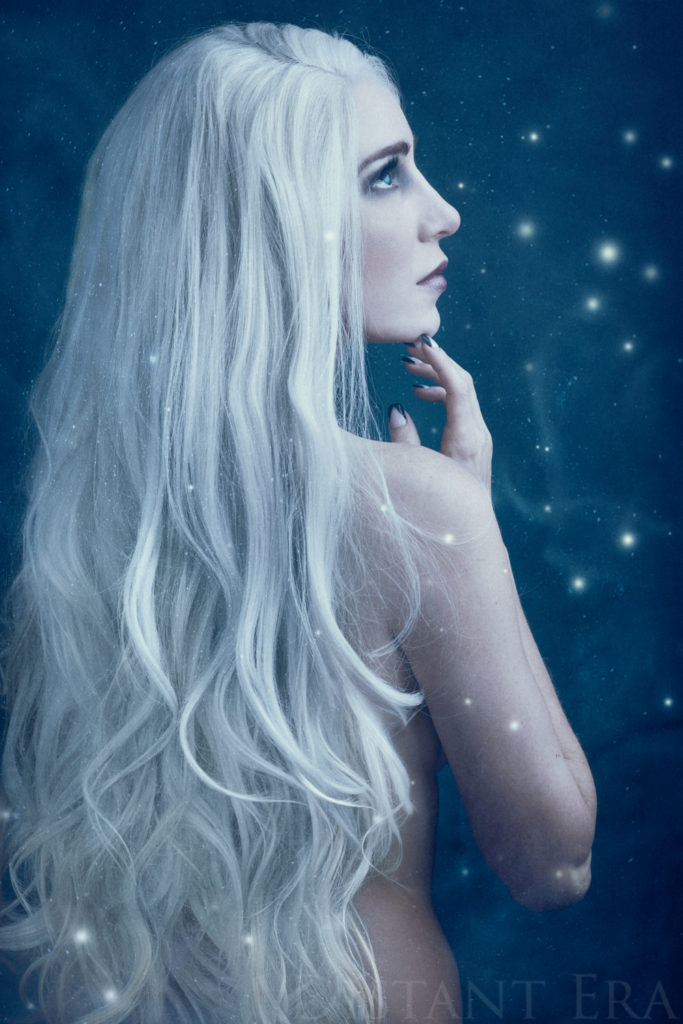
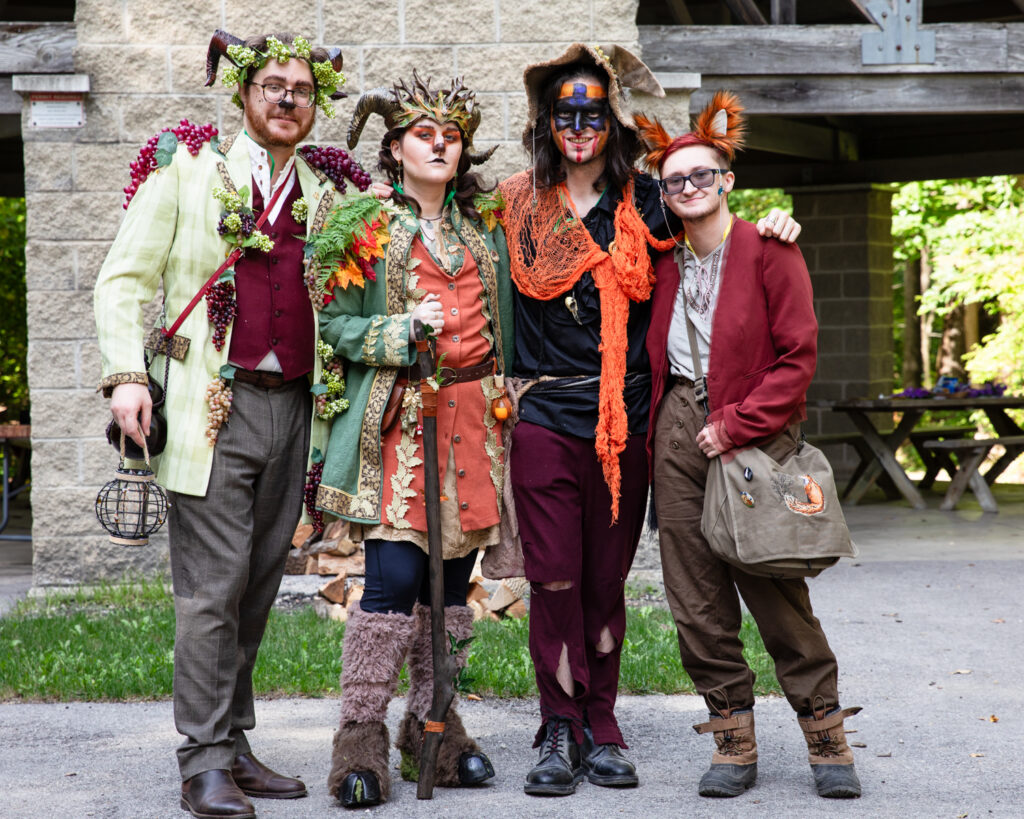
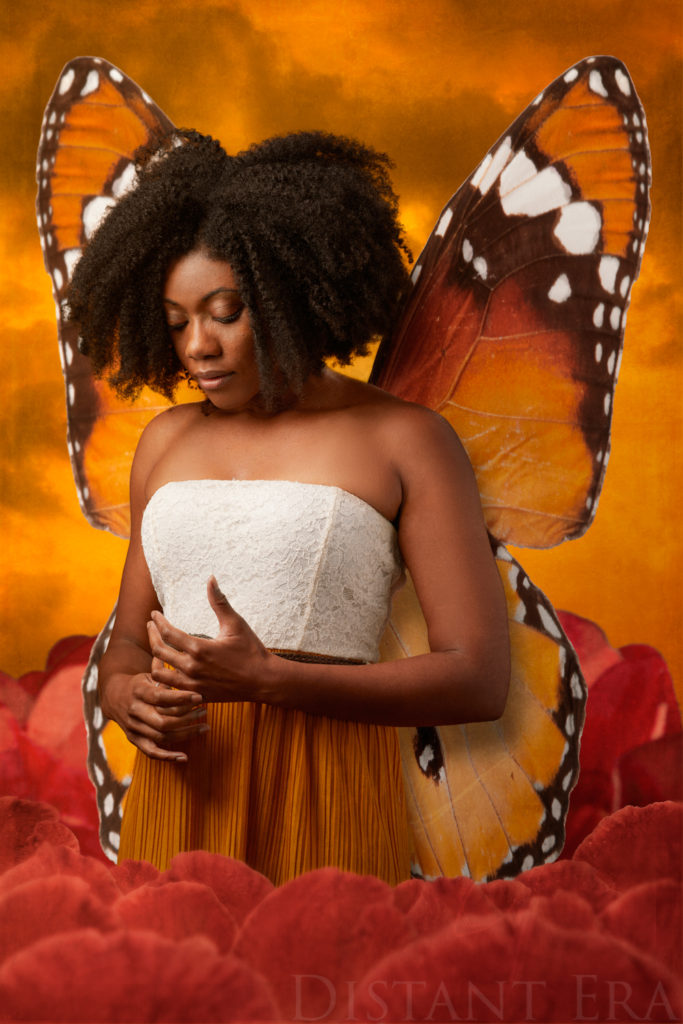
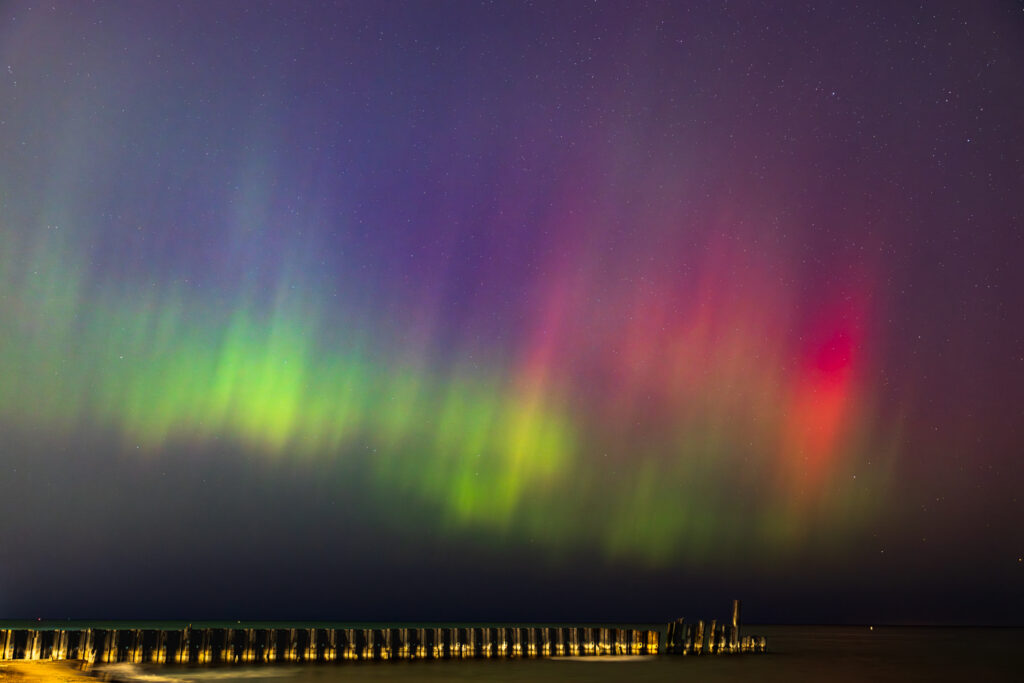
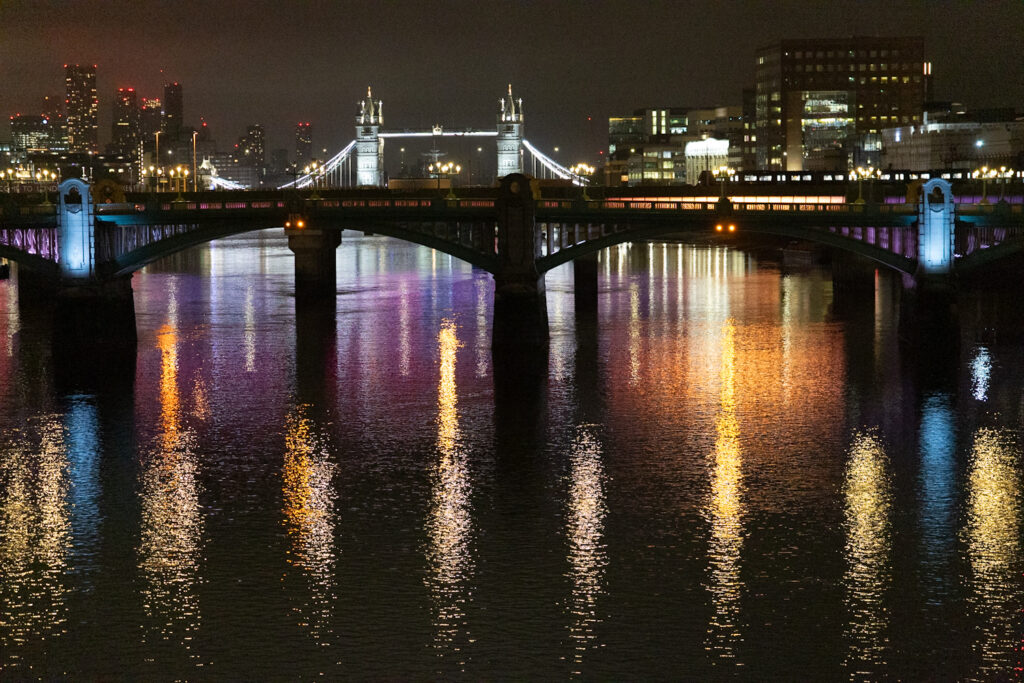

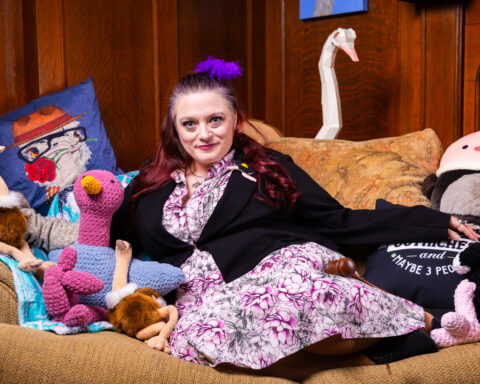


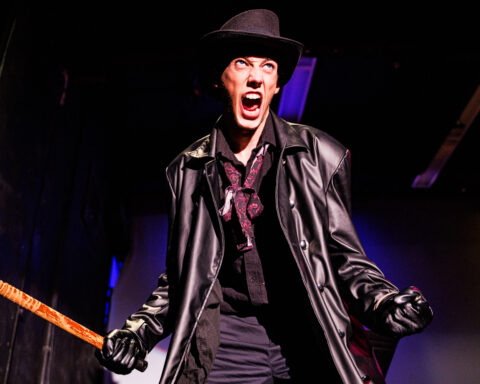
Follow Me